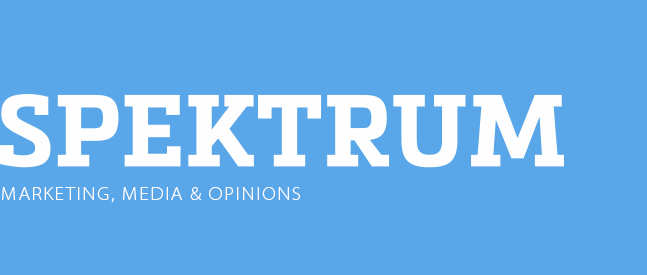
Everyone is online these days and everything is digital. If you want prompt information about a company, it’s worth checking the internet.
Be it a corporate website or a Facebook page - no other medium is as easily accessible and time-saving as the World Wide Web.
In the world of business, however, the image- or company brochure – alongside other printed business material such as flyers, customer magazines or posters – remains a key communication tool. You think companies are sticking to an obsolete marketing tool? Well, let’s take a closer look!

To begin with, it’s necessary to note that a company should think carefully about how it wants to be perceived by its publics – this is the most essential aspect of marketing! The image brochure can help: It prompts its creators to reflect upon the company’s essential core. After all, a brochure leaves little space: It must present all relevant information about the firm in a nutshell.
When I browse through an image brochure, I want to see all important facts at first glance. Text should be short in content and accompanied by images. Long paragraphs are a turn off – they need to be short and to the point.
Nevertheless, the image brochure is supposed to offer potential customers a deep insight; it must reveal the company’s visions and values, its size, services and products. Moreover, it should reflect upon the company’s history, neither neglecting its founding idea nor the milestones marking the way to its present success.
A timeline can visualize numerical facts, so that they become more easily digestible. Staff and team photos help give brands a face and lend character to a company. Also bear in mind that by giving your staff a chance to express their opinion, the brochure will leave a much more credible impression on the reader – so include quotes and anecdotes!
If your company has different sites, do list them all – but not in sequence! Don’t shy away from a more extraordinary, vivid design. Why not present the locations of your firm on a map. Of course, the brochure must contain standard company info, such as turnover, export share, the number of employees and so forth. However, again: avoid an overflow of words. Illustrations and graphics are perfectly suited to present such information.
No doubt, websites and image films do seem to cast a growing shadow over the image brochure. Topicality and reach are certainly advantages that leave no company unimpressed. The internet allows us to communicate in a much faster and cheaper way, at the same time opening the gateways to a worldwide audience. Today, we are also seeing social media pushing its way into the foreground. Facebook, Twitter, Instagram and Co. allows companies to appear more transparent and approachable to the public.
However, this does not imply that social media should supersede the image brochure! While social networks provide a personalized insight into the everyday business of a firm, classic advertising channels such as print ads and brochures are there to pitch the most relevant information – services and products – at a glance.
The image brochure brings along three relevant benefits that cannot be realized digitally. To begin with, it can facilitate the acquisition of new customers. Furthermore, it may be used to supply business partners with relevant information. And finally, it can also serve as a business card. After all, who has the time to take a closer look at the full scope of a website while at an outside meeting or trade fair?
Reflecting upon the benefits of a product, an image brochure can also be a strong sales promoting document with the asset of diminishing purchase inhibiting fears. Cleverly designed, it will present the company in a favorable light. After all, an image brochure continues to stand for credibility, reliability, quality and authenticity. It also proves handy, since it is easy to store and can be checked everywhere – even at places, where there is no internet.
Holding something in your hand, leafing through it and feeling the quality of the paper leaves a convincing impression. Moreover, a printed document must not exclusively influence the reader via mere textual content. Why not offer a haptic or sensory experience? An image brochure may be printed on scented paper, for example, if it represents a perfume manufacturer. It might as well be enclosed within a grainy envelope, if it stands for a company that is home to a desert state.
Thus, despite its fierce competitors in the digital age, the image brochure will not lose its relevance. It remains an indispensable marketing tool for companies, which can – no, which should – be used in addition to any digital presentation.